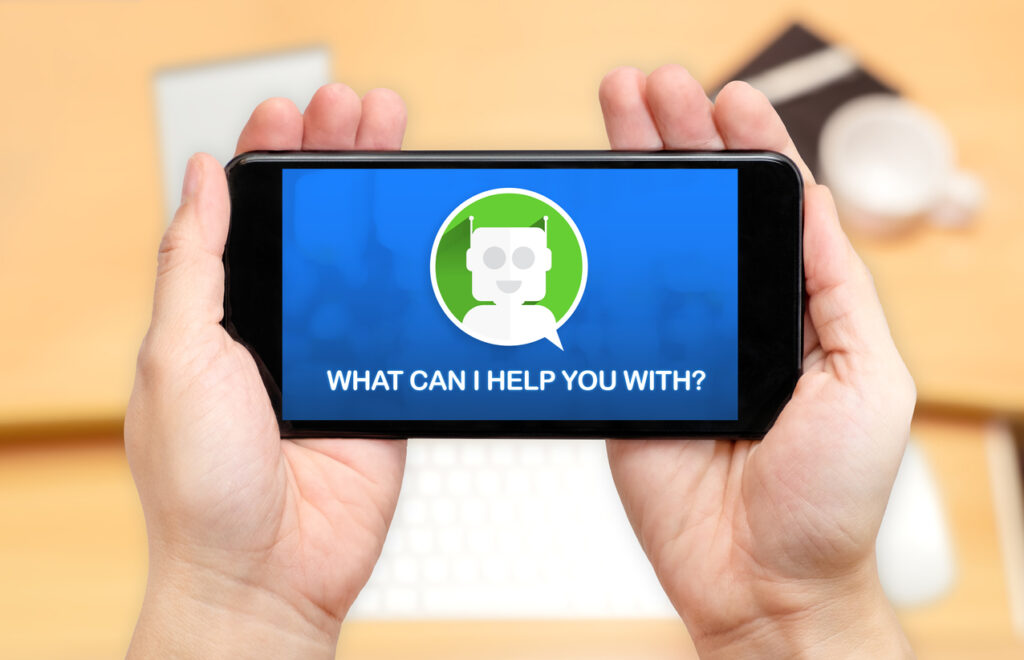Chatbots enable companies to communicate efficiently with their customers and the integration of machine learning is now opening up this technology to HR departments.
Chatbots have become a familiar sight in recent times, particularly on the websites of customer-facing organisations. Visitors to sites in industries such as retail, travel and property are increasingly being greeted by a message from a friendly bot asking how it can help.
These virtual representatives can serve as an effective frontline for companies with a high volume of customer enquiries and are commonly able to detect keywords and either provide a limited selection of answers or direct customers to sources of information.
Alongside supporting customer relations teams, chatbots have also proven to be increasingly valuable for HR professionals dealing with in-house queries from staff.
Chatbots are now capable of being much more than simple question-response systems that are essentially sociable search functions.
Many departments already use simple chatbots to enhance their staff portals by answering simple queries and directing employees to the appropriate knowledge resources such as forms and sections of the customer handbook.
With the rapid advancement of AI and machine learning technology in the last few years, chatbots are now capable of being much more than simple question-response systems that are essentially sociable search functions.
Enter AI and machine learning
Most people are familiar with the concept of AI (artificial intelligence) thanks to decades of science fiction. However, the technology is quickly bridging the gap between sci-fi and everyday life, with the concept most commonly being applied through machine learning (ML) solutions.
A machine learning programme is capable of analysing data sets and learning from them independently without direct human intervention.
This means a programme is able to autonomously identify patterns and connections between different data points, a capability that is prized in a wide number of industries where fast, large-scale analysis is important.
While ML programmes can crunch through data much faster than human analysts however, their true value is understanding complex patterns – which gives technology huge potential for communicating with humans.
Back in the world of HR, if an ML-powered chatbot is fed all of a company’s HR policies for example, it will be able to understand and contextualise them.
This means it will be capable of going beyond simply responding to keywords and will be able to provide real answers based on the context and wording of the question.
Training a chatbot
Just like a human worker, ML-powered programmes need training and education to function correctly. You could compare an ML programme to a six-year-old child – it has the basic vocabulary and grammar, and then starts to build knowledge and context over time.
Just like a child, an ML-powered chatbot will also develop most effectively when it has a lot of opportunities to interact with people and learn.
As it communicates with more employees, a chatbot can start to recognise questions and respond accurately even when the phrasing is new or there are typos. Any HR department deploying an intelligent chatbot should ensure staff are aware of their role in helping it train and learn.
A machine learning programme can likewise combine data from different sources and establish new connections in an intuitive way.
If you were to train an ML chatbot on the workforce’s leave allowance and calendars, as well as the company policy handbook, the programme would be able to establish an understanding of the full annual leave process at the company.
A machine learning programme can combine data from different sources and establish new connections in an intuitive way.
Once this has been achieved, an employee could simply message the chatbot to ask for next Thursday off, and the system will be able to tell them what their remaining days of leave are, and if anyone on their team has conflicting annual leave booked.
The bot could also be given permission to submit a request for leave, enabling the employee to do everything through one fast and easy chat conversation – and without any intervention from the human HR team.
The augmented assistant
The idea of machines doing the work of humans has often been a controversial topic, going back 200 years to the Swing Riots surrounding the advent of industrialised farming technology.
With that in mind, it’s important to note that intelligent chatbots are designed to support, not replace existing human HR employees.
Using chatbots to fulfil simple, by-rote activity such as holiday requests and company policy queries will free up the human team to focus on more engaging and higher value activity.
Intelligent chatbots are designed to support, not replace existing human HR employees.
In many instances, the machine learning system will be a frontline contact and take care of some simple legwork before passing on the case to a human team member.
For example, let’s say we have an employee who has logged sick leave, and is still unable to return to work after two days. An ML system could be programmed to detect this, and cross reference it with their access to medical insurance through the company.
The system can then send a message to the employee asking if they would like to activate their insurance package, as well as providing other relevant company benefits and information.
If the sick employee wants to progress, the bot can hand the case over to the human team for more involved communication and decision making.
The automated future
Despite its rapid advancement, machine learning is still a new, developing technology and current capabilities are only the tip of the iceberg.
Because programmes can develop with minimal human interference, and training and knowledge can be easily copied and deployed in other systems, the field of machine learning is likely to make huge leaps in the near future.
As the technology continues to develop, intelligent, ML-powered chatbots will become an essential tool for supporting busy HR teams in the next few years.







One Response
This is a genuinely horrible
This is a genuinely horrible concept. We need to get the human back into HR and recognise that managers need to tune into the emotional context of questions from staff. No computer can learn emotional intelligence.
This bottom-line investment will only come at the expense of human investment. There are many ways to automate routine HR functions now. What we need more of is conversation and listening.
I do find the idea that staff will be encouraged to help coach and nurture the development of the bot very funny though – comedy gold!
Having suffered from the UK Ministry of Justice’s insane Shared-Service System for four years none of the probation staff who’ve struggle to be paid properly due to miss-learned AS will find this idea funny though.